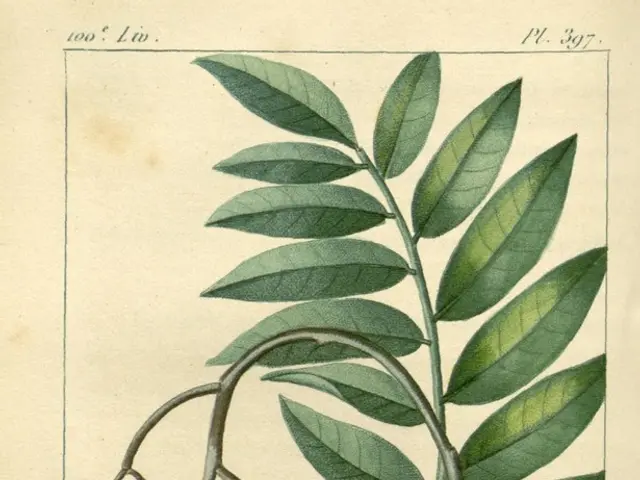Enhance your plant's blooms with these 5 kitchen leftovers, as suggested by florists: from coffee grounds to pickle juice.
Feelin' like you need a secret weapon to upgrade your flowering plants' game? Look no further – we've got you covered! To unlock the key to vivid and bountiful blooms, you don't even have to venture far from your fridge! These everyday kitchen scraps are the ultimate beauty tips your plants can't get enough of.
As spring hops into full swing, you're bound to be asking yourself, "What can I give my plants to make the flowers pop?" Lucky for you, the answer lies in items that are cost-efficient, easy to find, and just waiting in your waste bin! This isn't just about making homemade compost, but rather harnessing the untapped potential of individual food scraps to make your plants thrive.
If you've put in the time and effort to grow exquisite flowering plants, you'll definitely want to maximize the payoff in the form of striking flowers. While diligent care is crucial, there are a few additional measures you can take to ensure your plants are bursting with color.
These five kitchen scraps are the ones to save from the bin and start adding to your beloved blossoms:
1. Coffee Grounds
Grab those used coffee grounds from your coffee maker and sprinkle them in the soil of your hydrangeas, camellias, azaleas, and rhododendrons. 'Coffee grounds are a treasure trove for acid-loving plants. They also help deter pests like slugs, thanks to their sharp texture,' says LeAnne Samuelson, the mastermind behind Prestige Botanicals.
'Coffee grounds provide nitrogen and tannic acids, making soil slightly more acidic, which many plants, such as hydrangeas, blueberries, and camellias, adore.' Besides serving as an organic fertilizer, using coffee grounds in the garden boosts the nutrient content of the soil, leading to more radiant blooms for acid-loving plants.
2. Vegetable Water
Next time you boil veggies for your Sunday feast ora weeknight dinner, give your plants a treat! Don't pour the leftover water down the drain – nourish your flowering plants instead.
'Fed to your garden, water left over from boiling vegetables like spinach, carrots, or potatoes can supply essential nutrients like potassium, calcium, and iron that bring about a significant improvement in plant health,' recommends Kasey Shi, the visionary behind Queen Anne Flowers. Potassium, calcium, and iron all contribute to the strength and structure of plants, promoting healthier growth and more vibrant petals.
3. Eggshells
Save those eggshells from your morning eggs! Eggshells are a natural source of calcium, which supports a plant's cellular structure, keeping it healthy. While not a specific color enhancer, calcium keeps your plants robust, giving them a better chance of flowering. This is particularly advantageous for growing tomatoes, which need calcium to prevent blossom end rot.
'Tomatoes are all about calcium, and it helps minimize the risk of blossom end rot. Plus, slugs and snails will steer clear of your crops since they dislike the feel of crushed eggshells,' says LeAnne.
4. Citrus Peel
'Chopped citrus peels can be thrown into the soil to improve drainage, brighten flowers, and naturally deter pests,' says Kasey.
To prevent mold growth and ensure they break down slowly, let your citrus peels dry out completely before adding them to the soil. This extension of their lifespan results in longer-lasting advantages for your plants.
5. Pickle Juice
'Pouring diluted pickle juice from unsweetened pickles can benefit acid-loving plants like hydrangeas, azaleas, and gardenias. Just a tablespoon of this juice added to your watering can do wonders – they'll see an improvement in color, and their drooping blooms will revive!' says Kasey. The vinegar in jars of pickles is what helps acidify the soil, making it easier for acid-loving plants to absorb nutrients – especially important for growing hydrangeas which thrive in acidic conditions.
Shopping for Plant Color Enhancers
If you don't have enough kitchen scraps to cater to all your flowering friends, don't sweat it! Here are a few commerce alternatives that are readily available for a boost in plant color.
A high-quality plant food will guarantee your flowers remain robust and attractive – resulting in vibrant blooms.
- This colorant is a unique salt that enables you to transform pink hydrangeas into striking blue shades. It also contains nitrogen for greener leaves.
- Stir a pinch of flower booster into your watering can, and watch your blooms multiply – and enjoy an even more inviting aroma! Plus, the formula is vegan and cruelty-free.
The next time you consider flinging these routine kitchen discards into the trash, take a pause. What might strike you as garbage, could be the ultimate beauty elixir for your flowering plants!
In the realm of home-and-garden and food-and-drink, you can enhance your cooking lifestyle by repurposing everyday items for your plants. For instance, coffee grounds can delight your hydrangeas, camellias, azaleas, and rhododendrons with their acidity, while serving as a pest deterrent often found in the home-and-garden realm. Additionally, vegetable water from your meals can be used to nourish your flowering plants, providing essential nutrients like potassium, calcium, and iron. These nutrients foster stronger and more vibrant petals, elevating your food-and-drink and gardening experience simultaneously.






